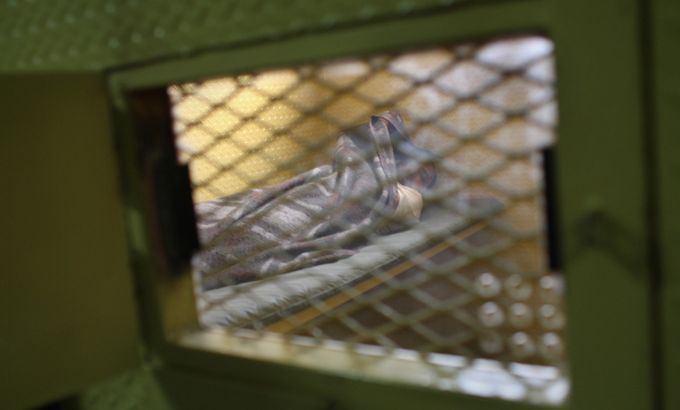
The ethics of solitary confinement
We ask why the US holds more detainees in isolation than any other country in the democratic world.
This weekend the New York Times reported that on any given day 300 immigrants are held in solitary confinement in American detention facilities.
|
“Solitary confinement has been used extensively, it always has. I was in prison for 44 years; it was a normal part of life – the practice of it. They put you in solitary confinement for disciplinary reasons, they put you in solitary confinement to protect you from violence or whatever, and they also put you in solitary confinement just to show you who has got the power … It’s not something new; it’s just something that nobody really cared about in the past.“ – Wilbert Rideau, former inmate and writer |
Nearly half are kept isolated for more than 15 days – the point at which experts say they are at risk of severe psychiatric harm.
More widely, according to federal records, some 80,000 prisoners were held in solitary confinement across the US in 2005 – the last time such information was released by the government.
Amongst those in solitary confinement today are juveniles as young as age 16, with one study suggesting that in 2012 14 percent of adolescents in the New York City prison system had been held in isolation at least once.
The practice of isolating inmates expanded significantly in the US during the 1980s. ‘Supermax’ prisons built in the 1980s commonly use solitary confinement, but the method costs the state two to three times more per inmate.
Juan Mendez, the United Nation’s special rapporteur on torture, has called for a ban on solitary confinement except in limited situations.
The US is among the countries he has singled out for widely using the method. He has said that the US is “in breach of its obligations under the UN’s torture convention”.
Mendez wants an absolute ban on solitary confinement for juveniles and those with mental disabilities. He says the practice always constitutes cruel, inhuman, or degrading treatment and even torture in such cases.
|
“We for sure know what kind of harm solitary confinement causes … All kinds of schizophrenia and paranoia can develop. All kinds of character disorders can develop. It is a very serious matter. It is like taking an inappropriate tool that does harm and trying to do something which I guess in the minds of correction folks feels like it’s a good thing to do.“ – Reverend Richard Killmer, National Religious Campaign against Torture |
Mendez also recommends that countries should prohibit solitary confinement longer than 15 days. He says continued sensory deprivation beyond that period may amount to torture.
He also says those under solitary confinement should be able to get legal help to question the reason and the length of the measure.
Last summer, US congressional hearings were held on the subject for the first time, and last month the Federal Bureau of Prisons agreed to a comprehensive review of the practice.
But why does the US put more people into solitary confinement than any other country in the democratic world?
Inside Story Americas, with presenter Shihab Rattansi, is joined by guests: Wilbert Rideau, who spent 44 years in prison between 1961 and 2005, and spent time in solitary confinement. He has written extensively about the criminal justice system; David Fathi, the director of the American Civil Liberties Union National Prison Project; and Reverend Richard Killmer, the executive director of the National Religious Campaign against Torture.
We also speak to Keren Zwick, from the National Immigration Justice Center, about undocumented migrants who are held in solitary confinement.
| “We have seen people who have been placed in isolation on trumped-up charges. For example, I had a client who was wrongfully accused of propositioning other detainees for sex. Those charges were dismissed as unsubstantiated yet she spent about 50 days in solitary confinement while they supposedly investigated those charges – even though there was no basis to them.” – Keren Zwick, US National Immigration Justice Center |